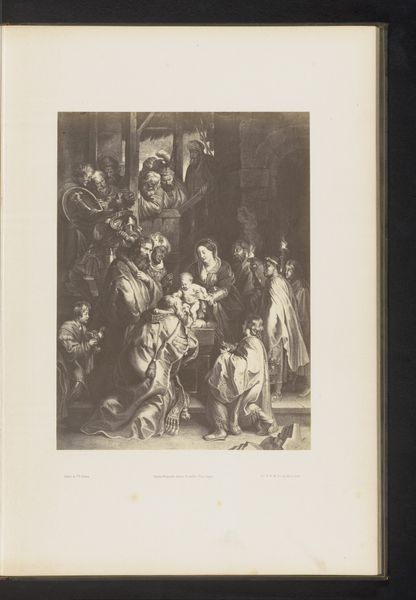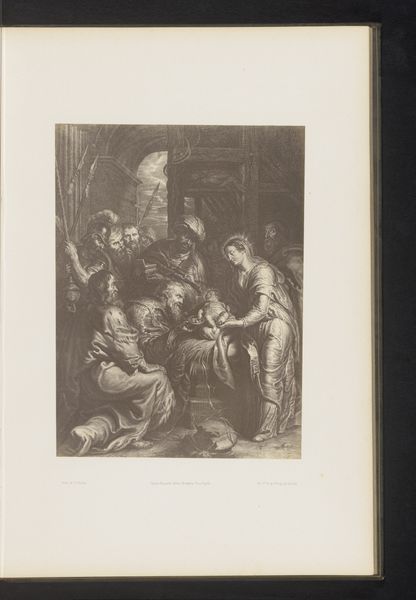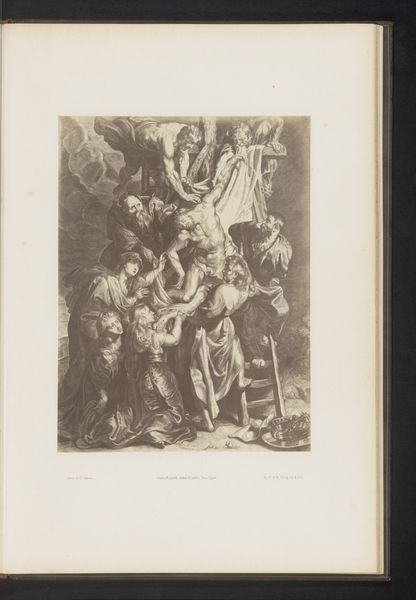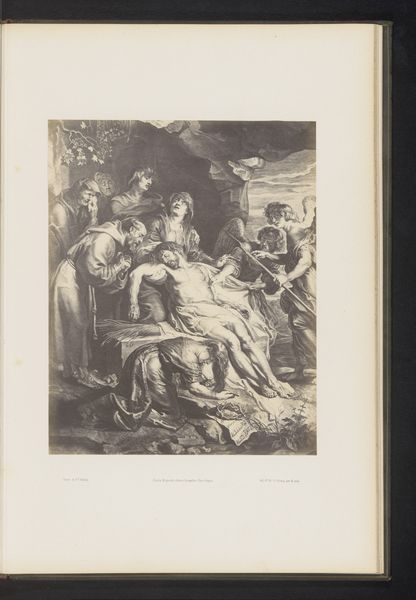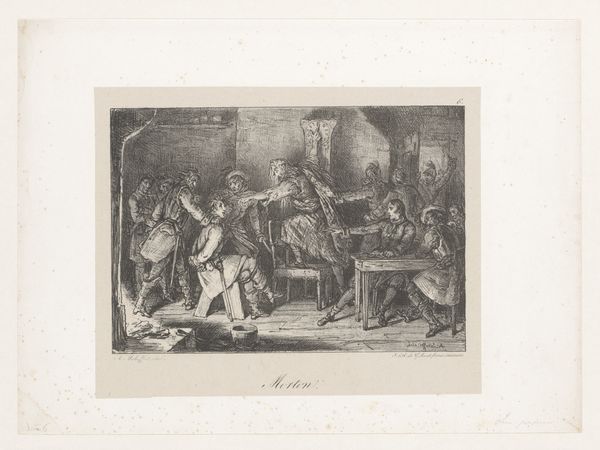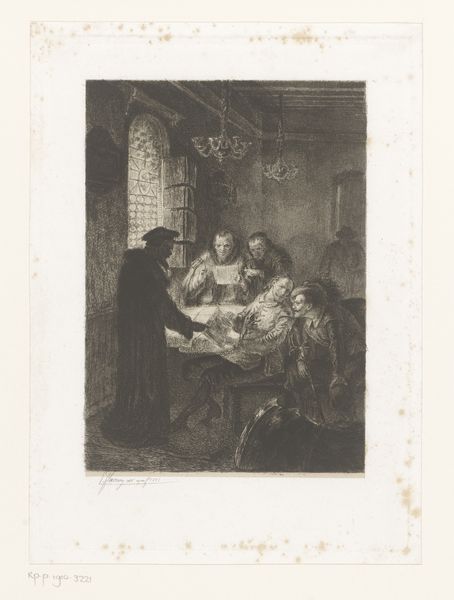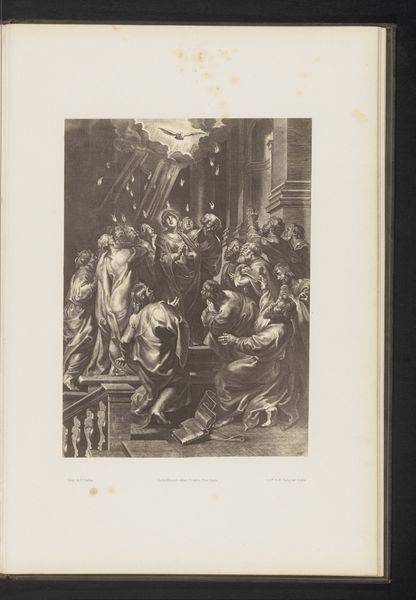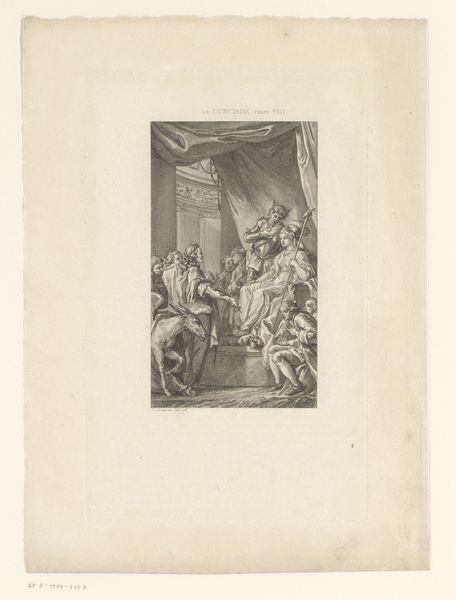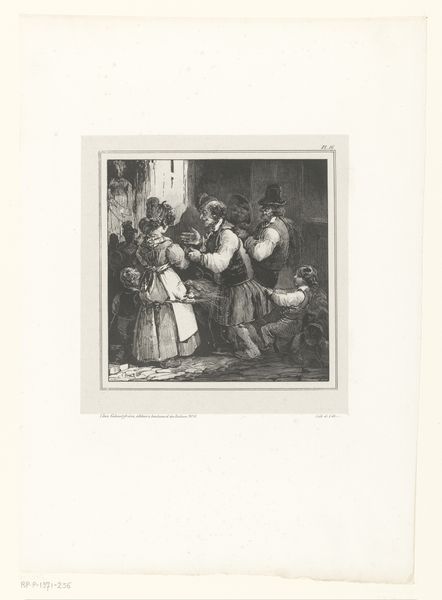
Fotoreproductie van een gravure van De geboorte van Christus door Lucas Vorsterman, naar het schilderij door Peter Paul Rubens before 1858
0:00
0:00
Dimensions: height 310 mm, width 237 mm
Copyright: Rijks Museum: Open Domain
Curator: The texture is immediately striking—dense areas of dark lines and forms punctuated by sharp highlights, an early photographic reproduction of an engraving titled "The Nativity," after Peter Paul Rubens, by Lucas Vorsterman. It was made before 1858, making it one of the earlier methods of art documentation. Editor: It does feel somber, doesn't it? Almost as if a shroud has been placed over the otherwise luminous scene of the Nativity, dampening its characteristic celebratory mood. The strong diagonal lines and tonal contrasts create a scene of enclosed solemnity. Curator: Enclosed indeed! Note how Vorsterman—and Rubens before him, no doubt—uses the architecture of what appears to be a simple stable to create dynamic vectors. The converging lines guide the viewer's eye, focusing our attention toward the emanating light around the newborn Christ. A literal interpretation, surely. Editor: Well, yes, but observe where the architecture and those beams above converge. Are they simply framing the divine event, or hinting at the "wheel of life" – cycles of rebirth, mortality, human toil... considering the grittiness of the setting, the presence of those mill wheels above brings forward earthly life alongside the miracle, the humbleness of this scene. The juxtaposition brings new light to it. Curator: Perhaps. One cannot deny the stark contrasts here and how they bring dynamism and drama—hallmarks of Baroque aesthetics, further complicated in the context of Realism through this photogravure process of art reproduction. The image teeters—and this, likely, accidentally due to degradation—between sacred moment and... historical record. Editor: Perhaps the 'degradation' as you name it carries significance; the piece offers a mediation on the passage of time. The figures retain certain recognizability in pose and proportion but have become slightly shrouded. Rubens’ vibrant Baroque celebration now tempered through a 19th-century lens of industrial advancement, religious uncertainty, and social awareness. Curator: Ultimately, the piece shows us how both form and interpretation can transcend artistic media to continue creating discussion even in reproductions from a different artistic medium. Editor: Yes, even within the strict limitations of engraving and photogravure we uncover potent messages—revealing, finally, how interpretations of myth persist as culture shifts and redefines old narratives.
Comments
No comments
Be the first to comment and join the conversation on the ultimate creative platform.

